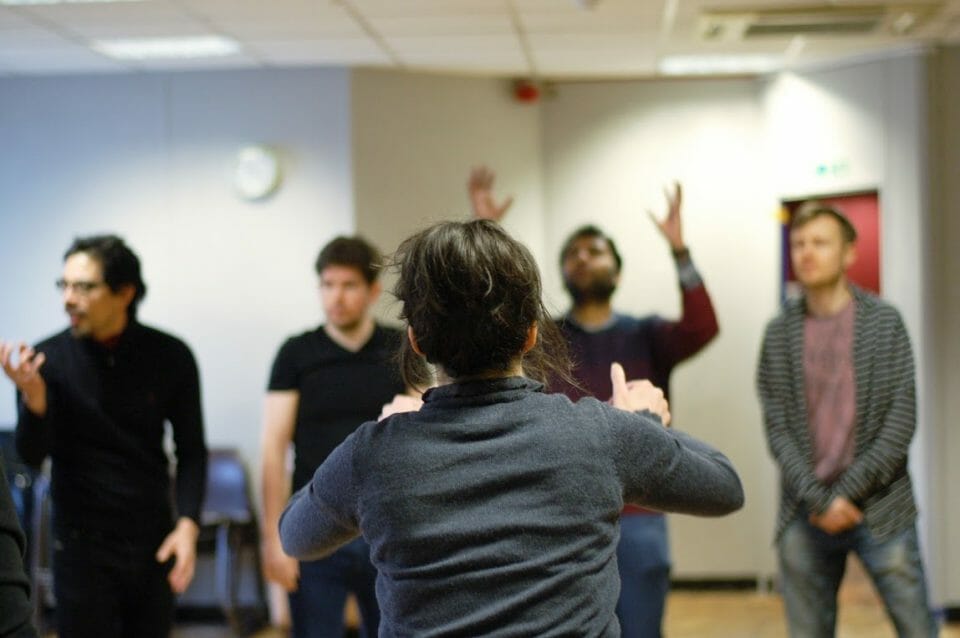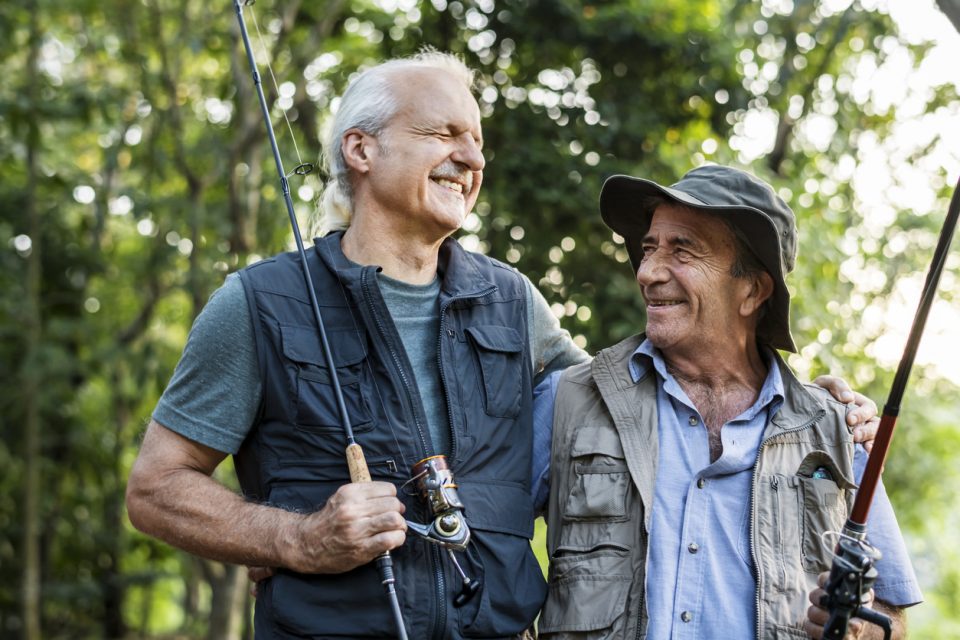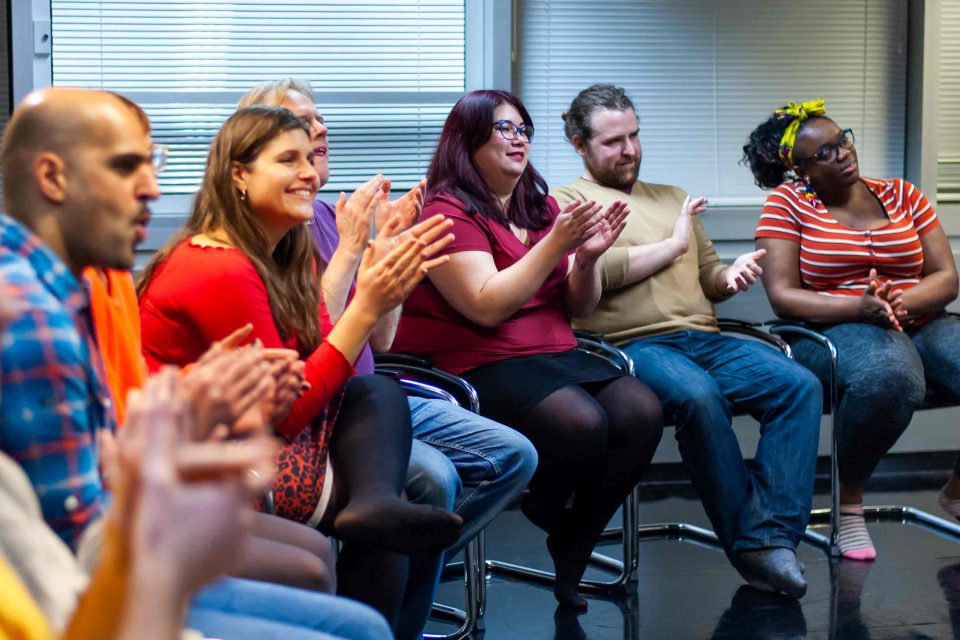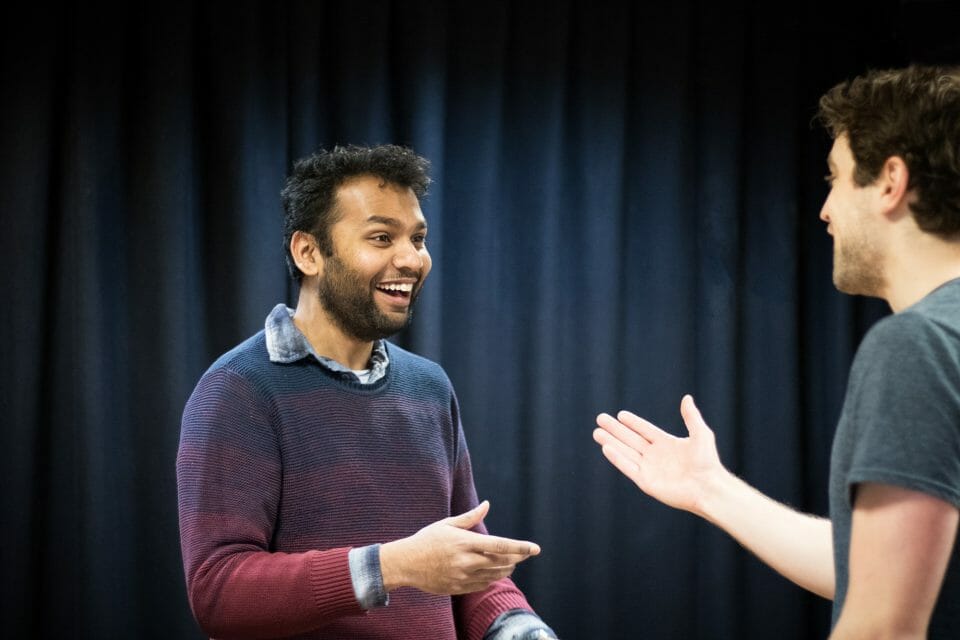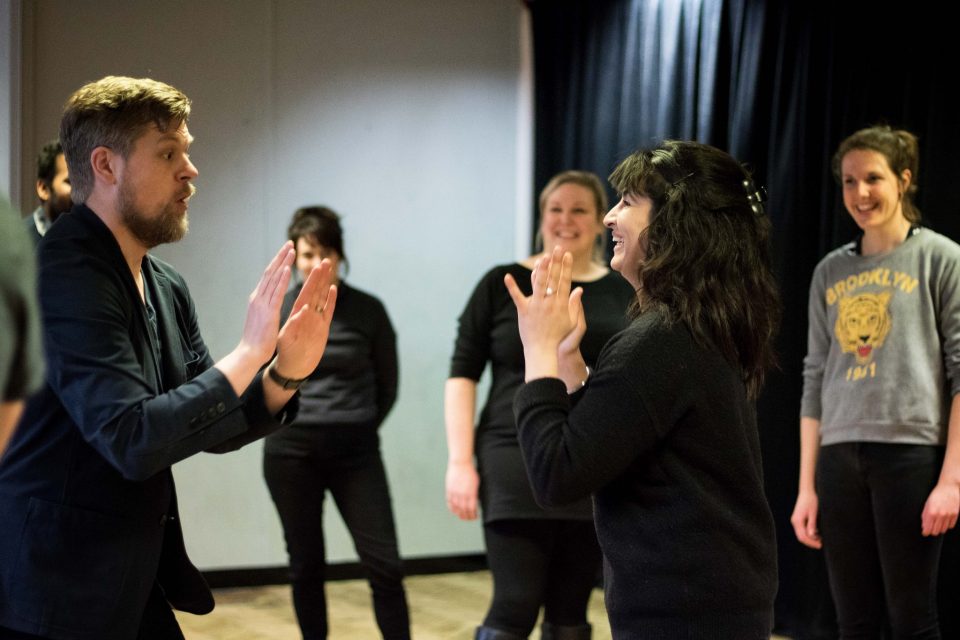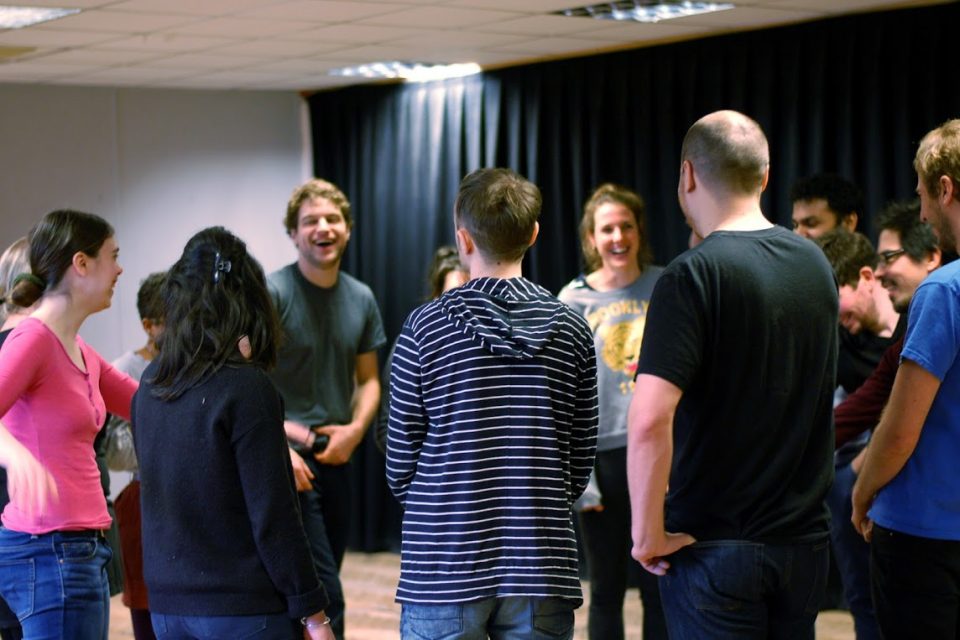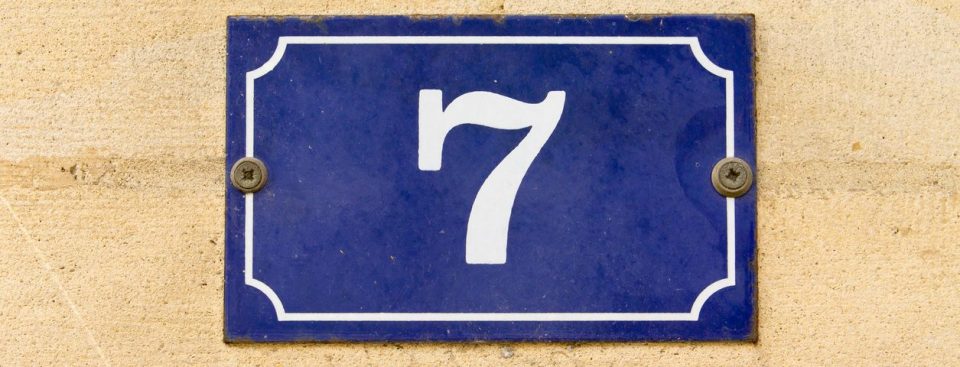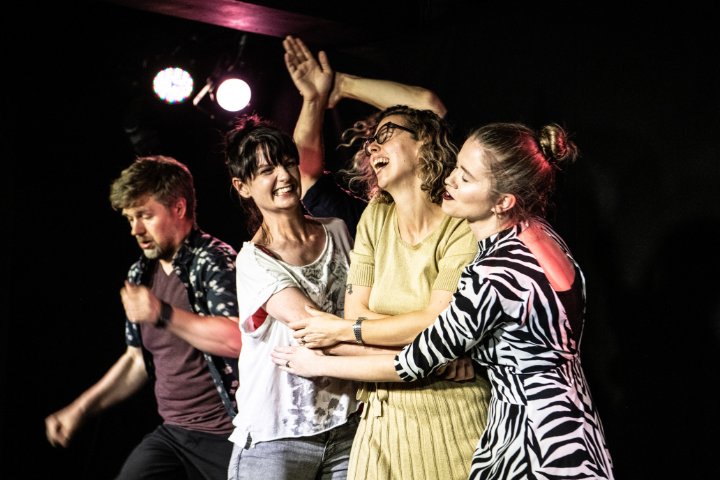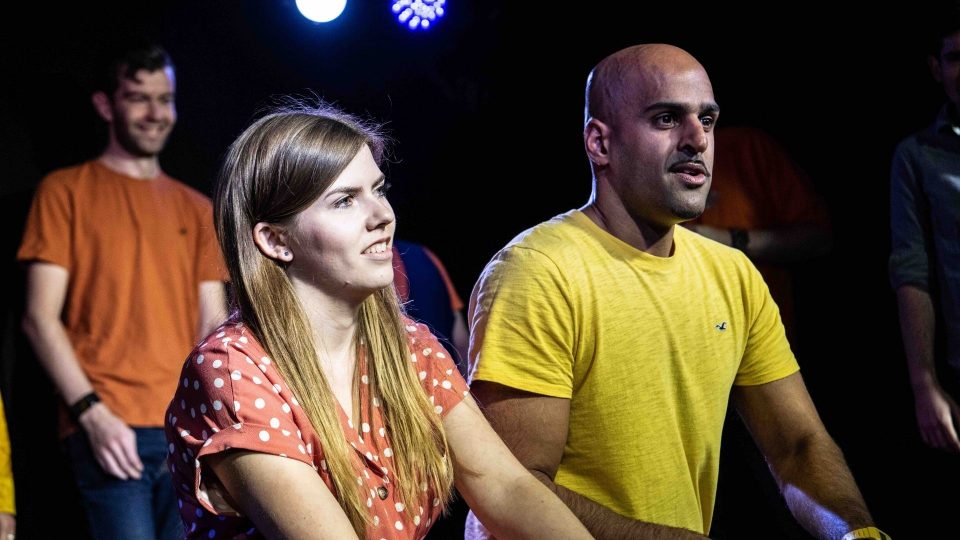Shared Activity A nice way to start a two person scene. Both improvisers start the scene at exactly the same time on stage and find a shared physical activity that they can be doing together. They then play the scene but don’t talk about the activity too much, and use the dialogue to explore something[…]
Who What Where Now Improvising scenes with a focus on defining the following things pretty early on in the scene: Who: Who the characters are and what relationship they have to each other. What: What they are doing, what’s happening, what the scene is about. Where: The location of the scene. Be specific. Now: Making[…]
Peas in a Pod Two players start a scene where they immediately mirror each others body language and copy each others sounds, gestures and mannerisms. It will create two characters that are very similar to each other, like they are best friends and have known each other for a long time. You can also play[…]
Three in a Circle / I’ll Keep Description Player 1 jumps into the middle of the circle and becomes an object/thing/character and says what they are. Player 2 then jumps in and then says and becomes something that compliments the offer of Player 1, with some specifics thrown in too. Player 3 then jumps in[…]
Scene Carousel A helpful exercises for helping people getting used to doing improvised scenes in front of an audience. 6 people up, 3 on each side of the stage, or any other number really. 2 step into the middle of the stage and are given a suggestion to improvise a scene from. When the teacher[…]
Party Planning / Picnic Basket Two similar games that illustrate the difference between blocking and Yes-Anding. Two improvisers take it in turns to offer ideas for a party, as part of a party planning conversation. In the first round each idea is said no to and rejected. We then have a chat about how it[…]
Circle of Extraordinary Coincidences Description Have one person do an abstract sound and motion. As soon as they do, another person goes over to them and joins in. Someone else initiates a different abstract sound and motion and a second person joins them. As soon as this starts, the first creation stops. This way, lots[…]
Action and Entrance Description A lovely simple way of starting scenes and very helpful for people doing longer scenes for the first time. One person enters the stage and starts doing an activity. Someone else then enters the stage with an emotion and establishes a relationship with the other actor. Make sure the first move[…]
Sevens Description A circle game in which numbers 1-7 are passed around the circle; each is accompanied by a tap on one of your own shoulders. Which shoulder you tap determines what direction the count goes in. The number seven is different: you must raise two hands pointing in different directions, the top hand determines[…]
Eastenders Description Fun warm up based on a London soap opera. The group stands in a circle. Various things are passed around the circle from person to person in order, each thing said below has a different rule attached: ‘AVE IT! – passed around from person to person with an arm swing. OI! – changes[…]
Clingy Penguin Description Have two lines of improvisers. The first line pick an emotion/adjective/describing word and role each (like clingy penguin). They then pass these to the person next to them in secret. Now play scenes where each person embodies the characters they were given with one other player who has no given character. Switch[…]
Blanks Steal a Car Description A scene with three people in a car. Once they’ve done a bit of a scene, one of them says “Oh no, that bunch of [blank] are going to steal this car!” New improvisers enter in character, take over the car and the idea repeats. Subscribe to Our Newsletter[…]



